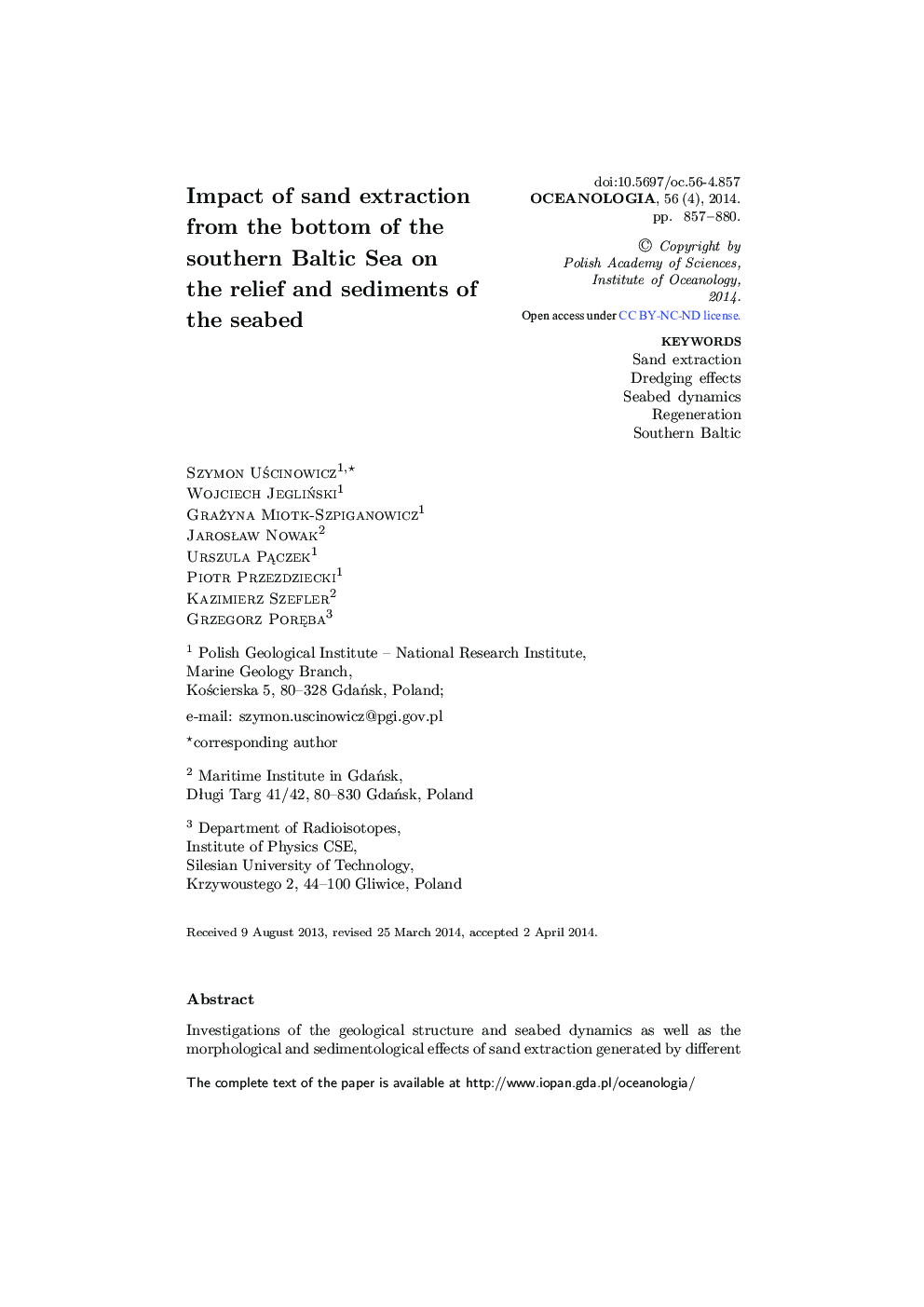| Article ID | Journal | Published Year | Pages | File Type |
|---|---|---|---|---|
| 2069753 | Oceanologia | 2014 | 24 Pages |
Investigations of the geological structure and seabed dynamics as well as the morphological and sedimentological effects of sand extraction generated by different mining techniques were carried out in Polish waters of the Baltic Sea, NW of the Gulf of Gdańsk, at a water depth of 15–17 m. Three research cruises took place: just before, directly after and 11 months after dredging operations. Seismoacoustic profiling, a multibeam echosounder, a side-scan sonar, a 3 m vibro-corer and a box-corer were used during the research cruises. The grain size distribution and 137Cs content of the sand samples were determined. Marine shells were dated by the AMS14C technique and pollen analyses were carried out on samples of muddy sands lying below the marine sand. A 2 to 4.5 m thick layer of marine sands lies on the boulder till and locally on late Pleistocene ice margin lake deposits. The 137Cs content indicates that the 0.4–0.8 m thick sand layer is mobile during storms.After the dredging operations, four pits with diameters from 80 to 120 m, depths from 3 to 4.5 m and slopes with gradients up to 30–55° were measured. Several smaller irregularly shaped pits and double furrows 30–150 m in length and 0. 3–0.5 m in depth were found. The sonar mosaic also shows a 50–100 m buffer zone of fine sand around the pits which flowed over the dredger’s side with water and settled on the bottom.During one year after the dredging operation the furrows generated by trailer suction hopper dredging as well as the fine sand cover around the pits disappeared completely. The four post-dredging pits left by stationary suction dredging were shallower by 2–2.5 m, their diameters increased by 40–50 m, the gradient of the slopes was reduced by up to 5–10°, and the total volume was only about 3.5% smaller than directly after dredging.
